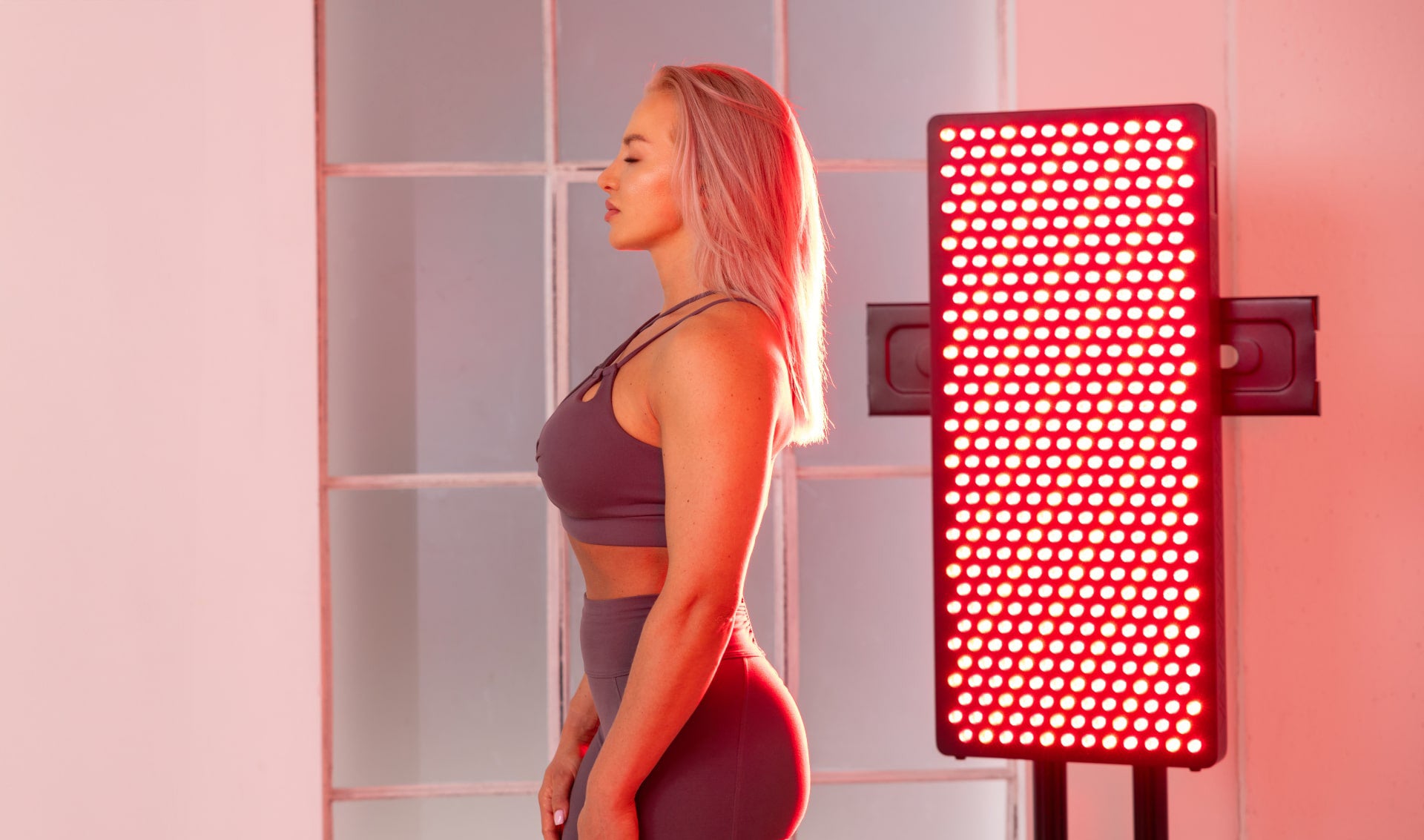Learn the basics
FAQs
Red light therapy supports you in the following areas:
- Faster regeneration
- Improved athletic performance
- Optimized hormone production
- Increased collagen production for healthy skin
- Reduced inflammation in the body
- Sleep and your circadian rhythm
- Musculoskeletal system
- Mental and cognitive functions
- Eye health
- Longevity & Vitality
The recommendation of a 10-minute treatment per day is a general guideline. For larger devices like the Mitohacker, which covers a large area, you can actually use 10 minutes on the front and another 10 minutes on the back of the body. This ensures that the benefits of light therapy are evenly distributed. It is crucial that the total irradiation of a single body part is no more than 30 minutes per day, as stated in customer feedback and application guidelines.
The greater the distance from the body, the lower the radiation output and the longer the time required. The greater the distance, the larger the irradiated area.
In addition, every person can react differently, so it is necessary to adapt the therapy time to the individual reactions.
For maximum effect (penetration of the light into the depths of muscles, tendons, bones, joints and possibly the brain) it is important to maintain a distance of 15 - 50 cm. For effects that do not depend so much on the depth effect (quality and health of skin, hair, etc.), the light can be irradiated from a greater distance.
You can also carry out a second therapy during the day - for example before or after a sporting performance for recovery. Overall, the lighting duration should not exceed approximately 30 minutes per illuminated area per day.
In general, it is most important to focus the light on the front part of the body. This illuminates the head (brain), neck (thyroid), chest (lungs, heart), stomach (gut, microbiome) and crotch (sex hormones). So it's great for overall health, energy, cognitive function, microbiome and improved synthesis of hormones, especially thyroid and testosterone, which are also important contributors to overall energy.
If the light isn't uncomfortable when your eyes are closed, you don't need to wear safety glasses. Just keep your eyes closed. The safety glasses are only intended in case someone is sensitive to light and would be uncomfortable using the device without them. The other way to use the safety glasses is in the evening. If you use the light in the evening, we recommend either glasses or just the invisible near-infrared spectrum, which won't disrupt your circadian rhythm.



















